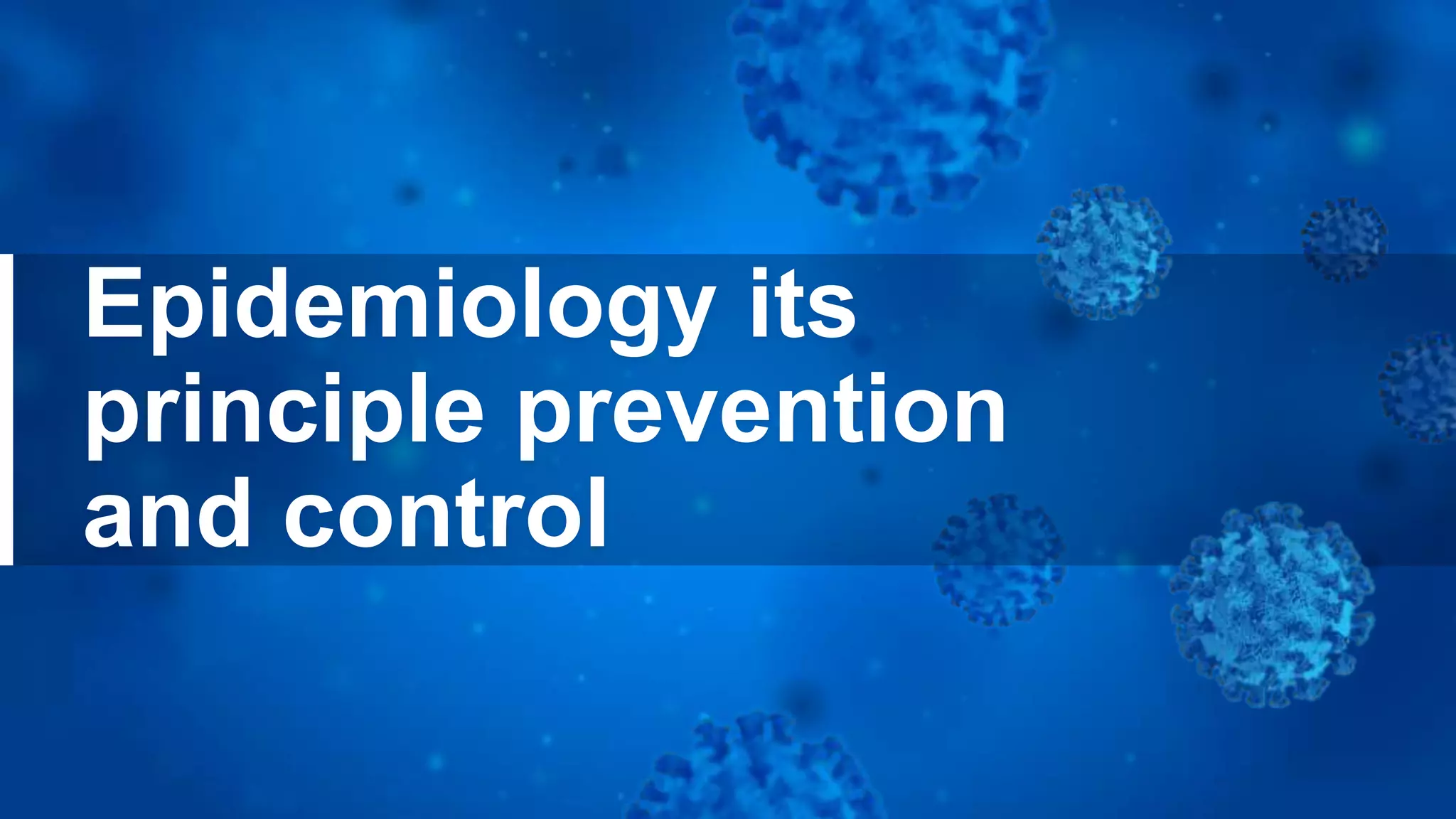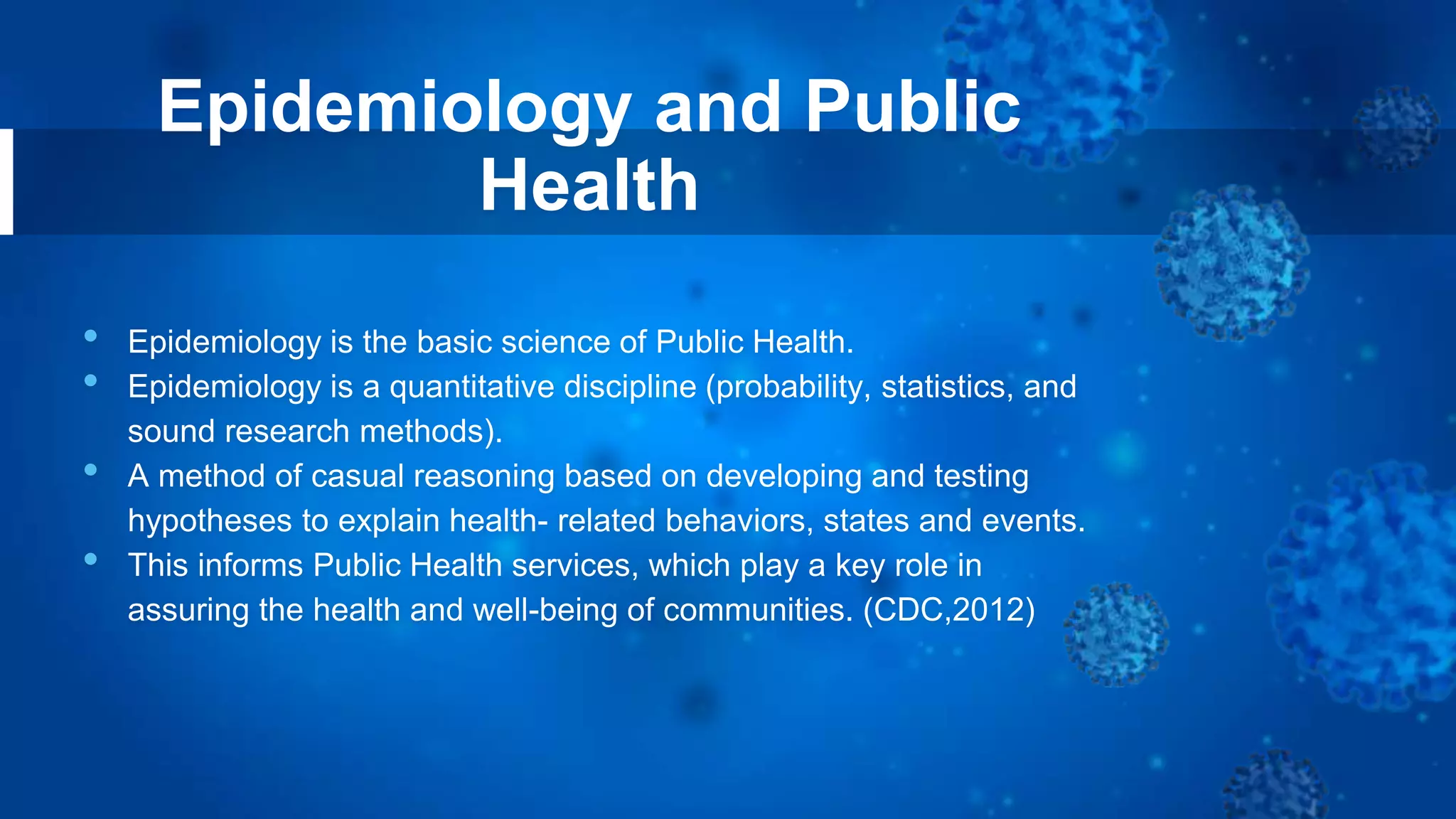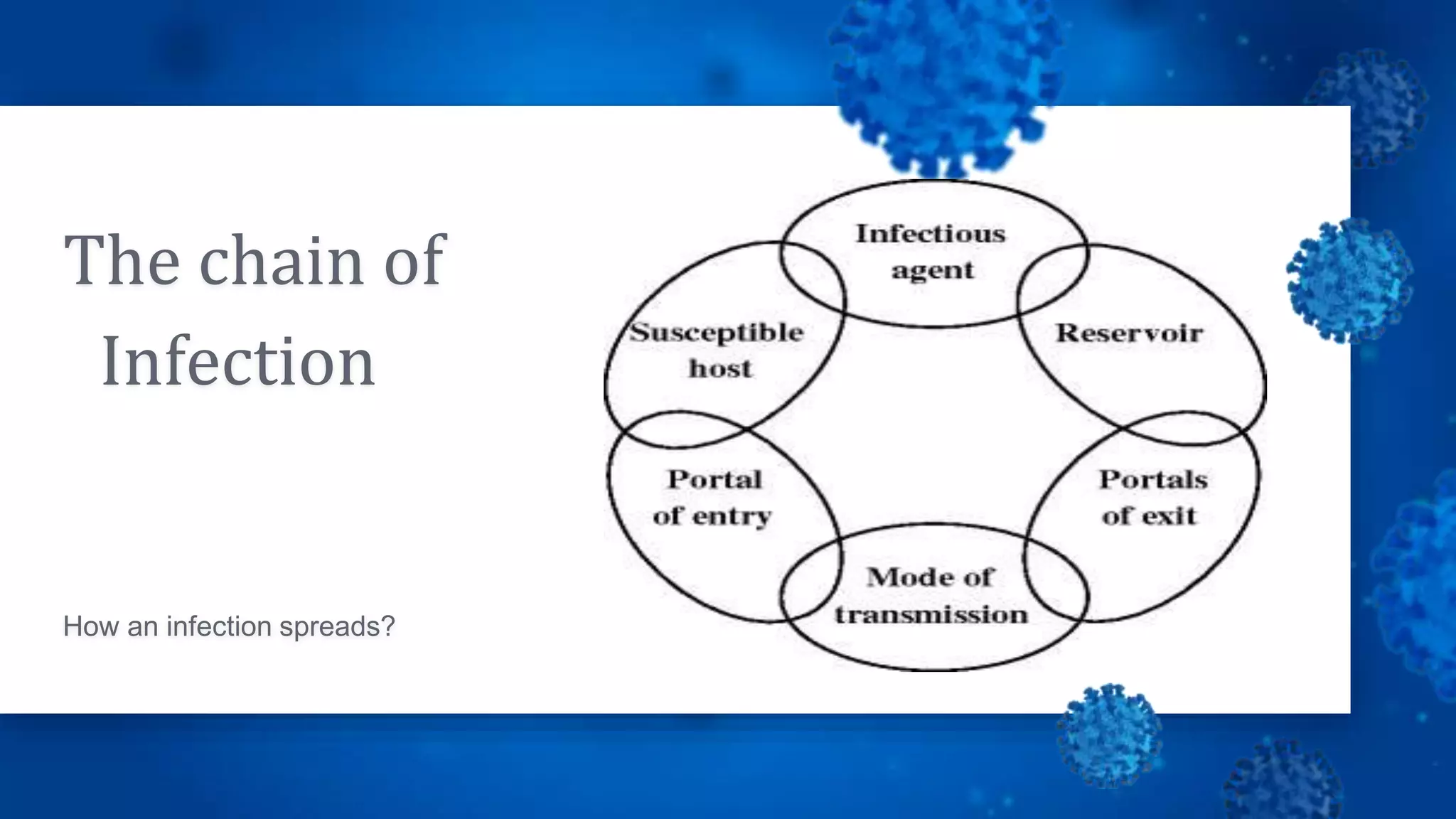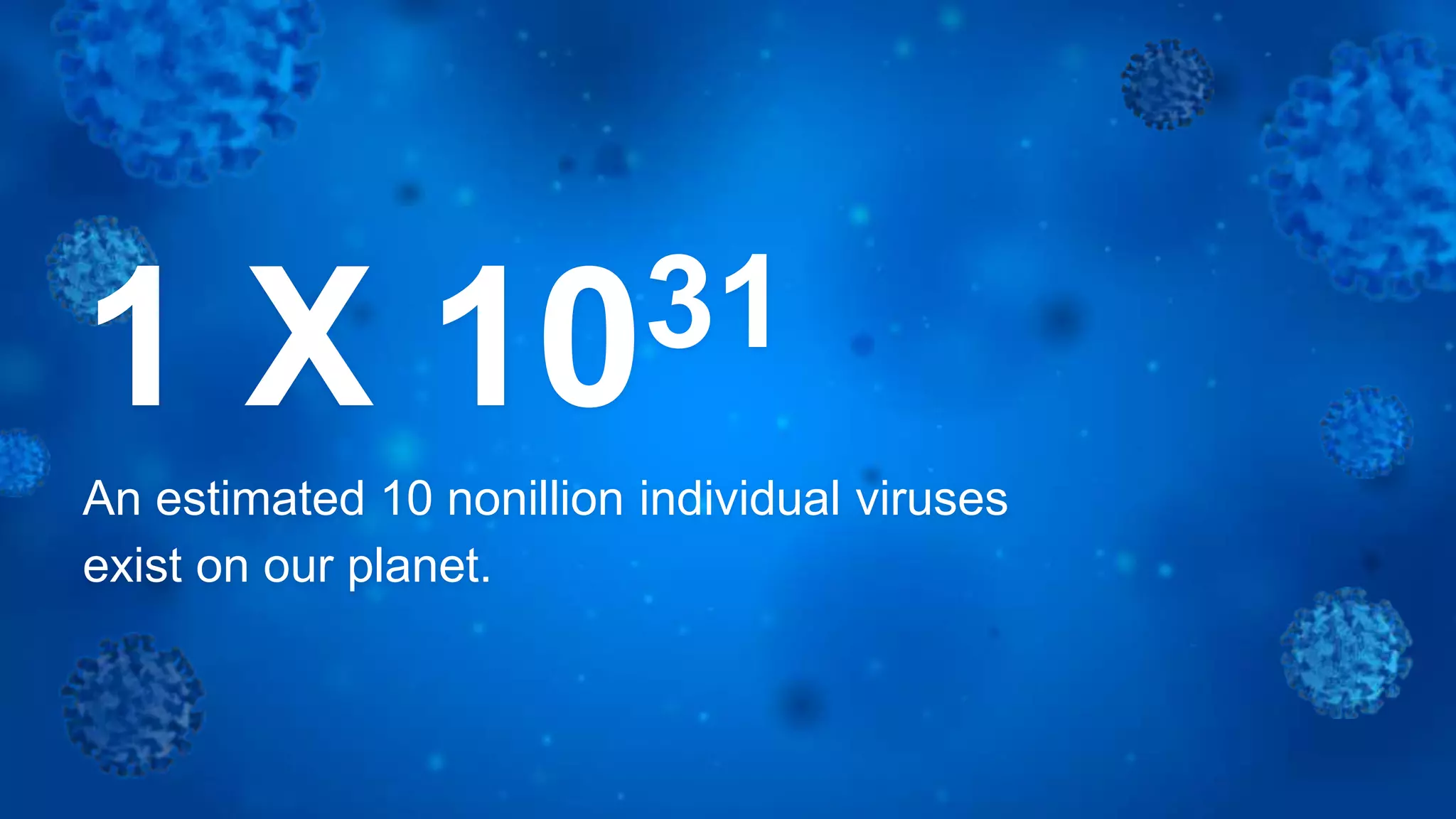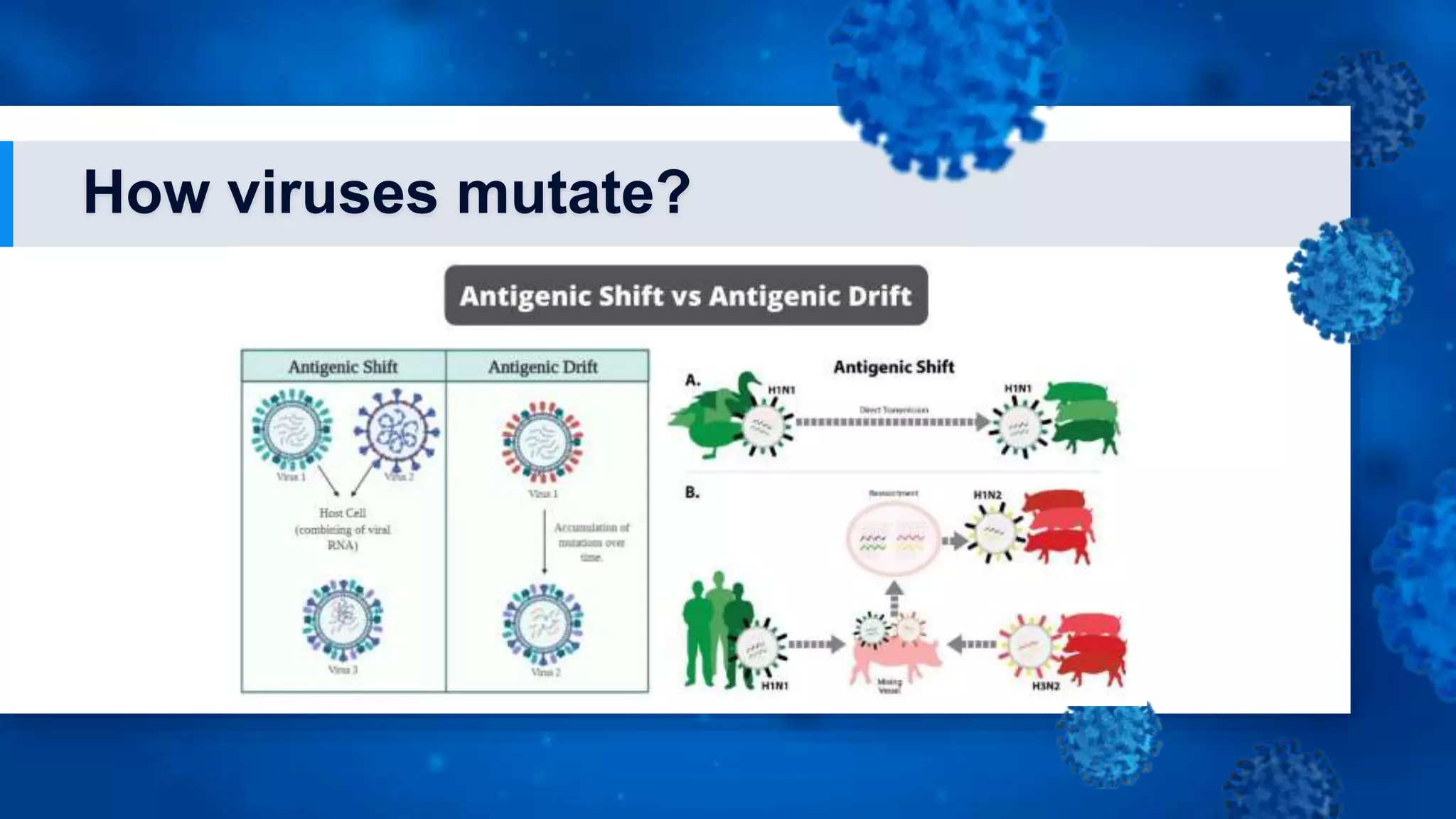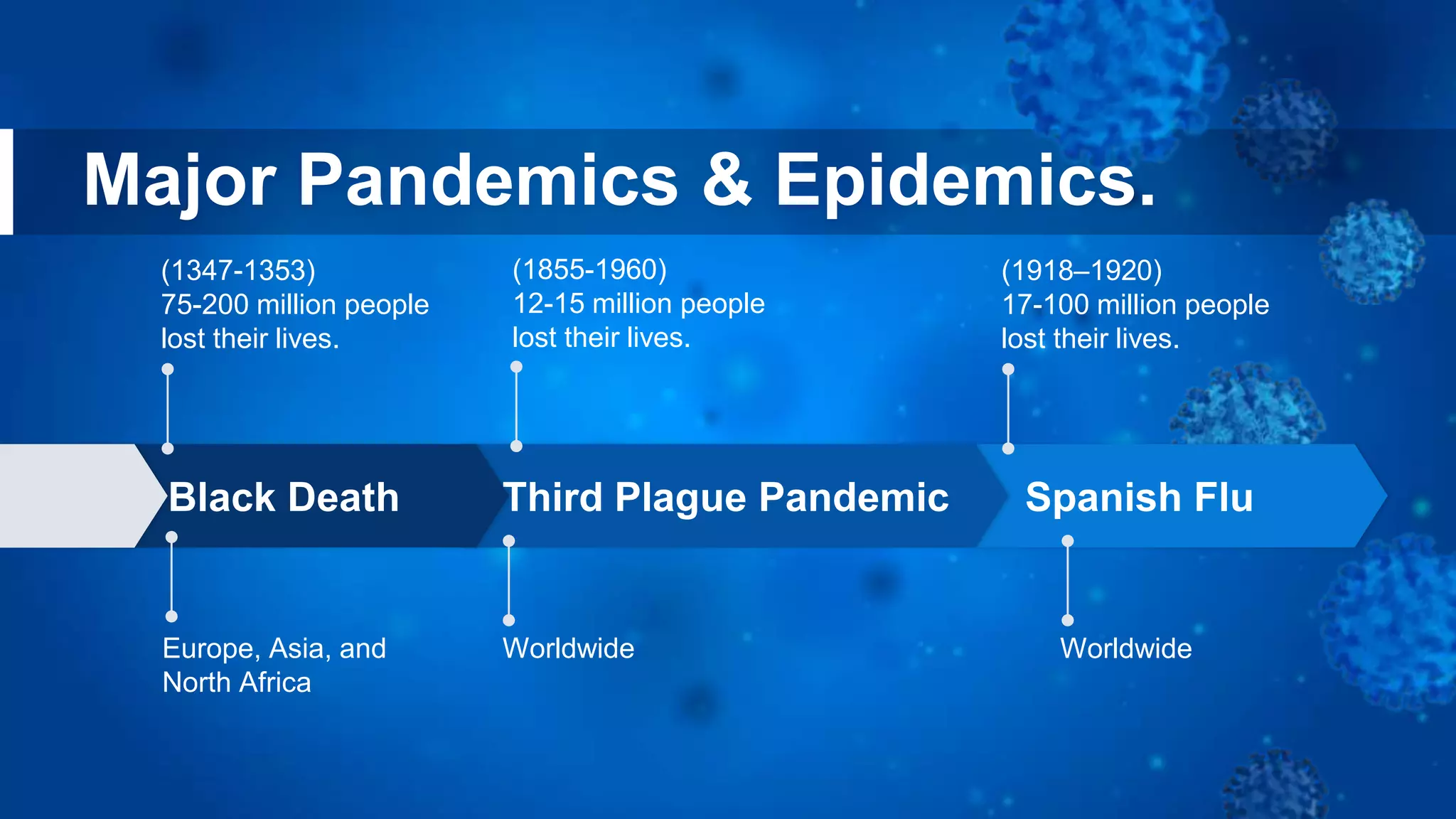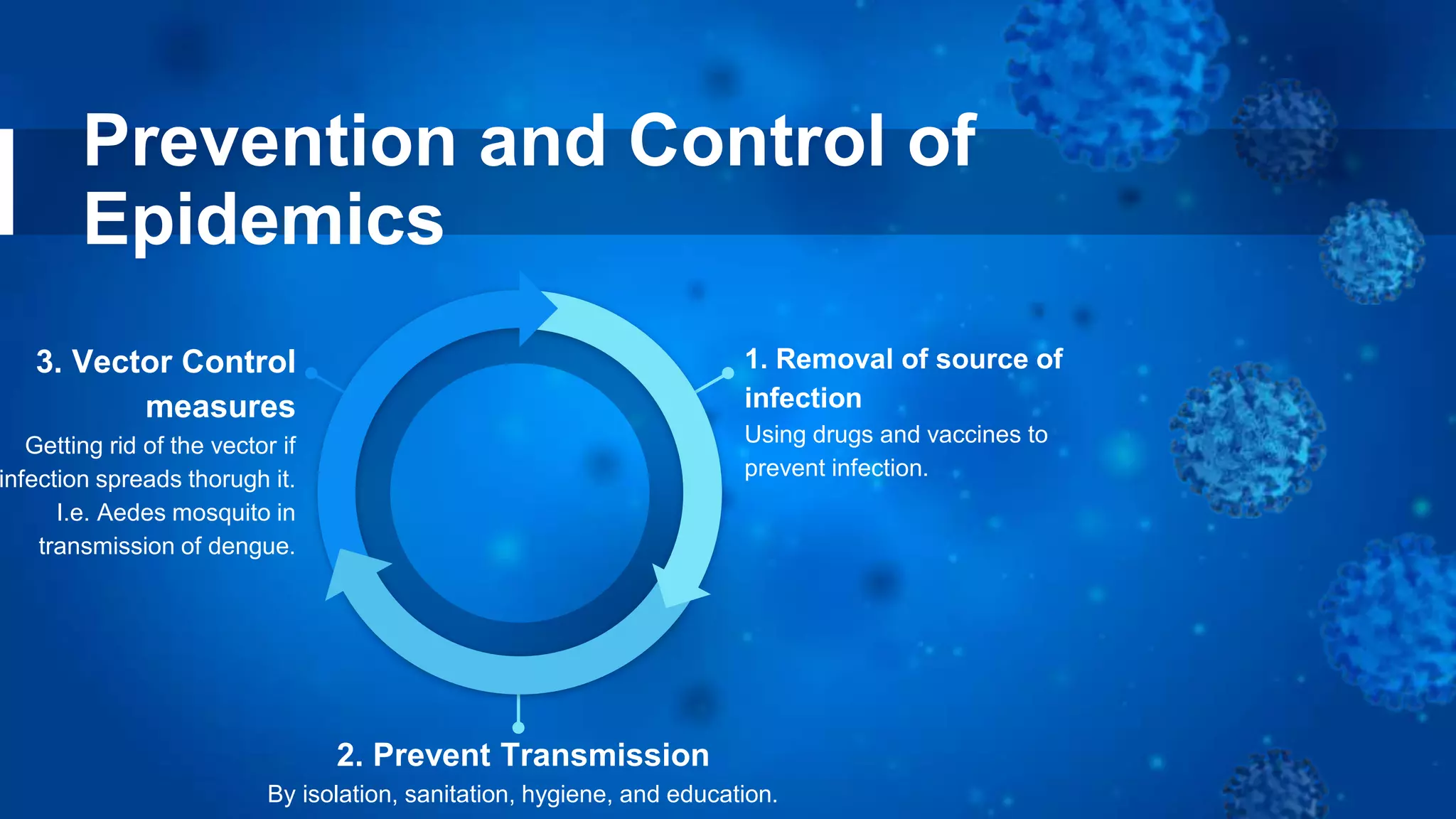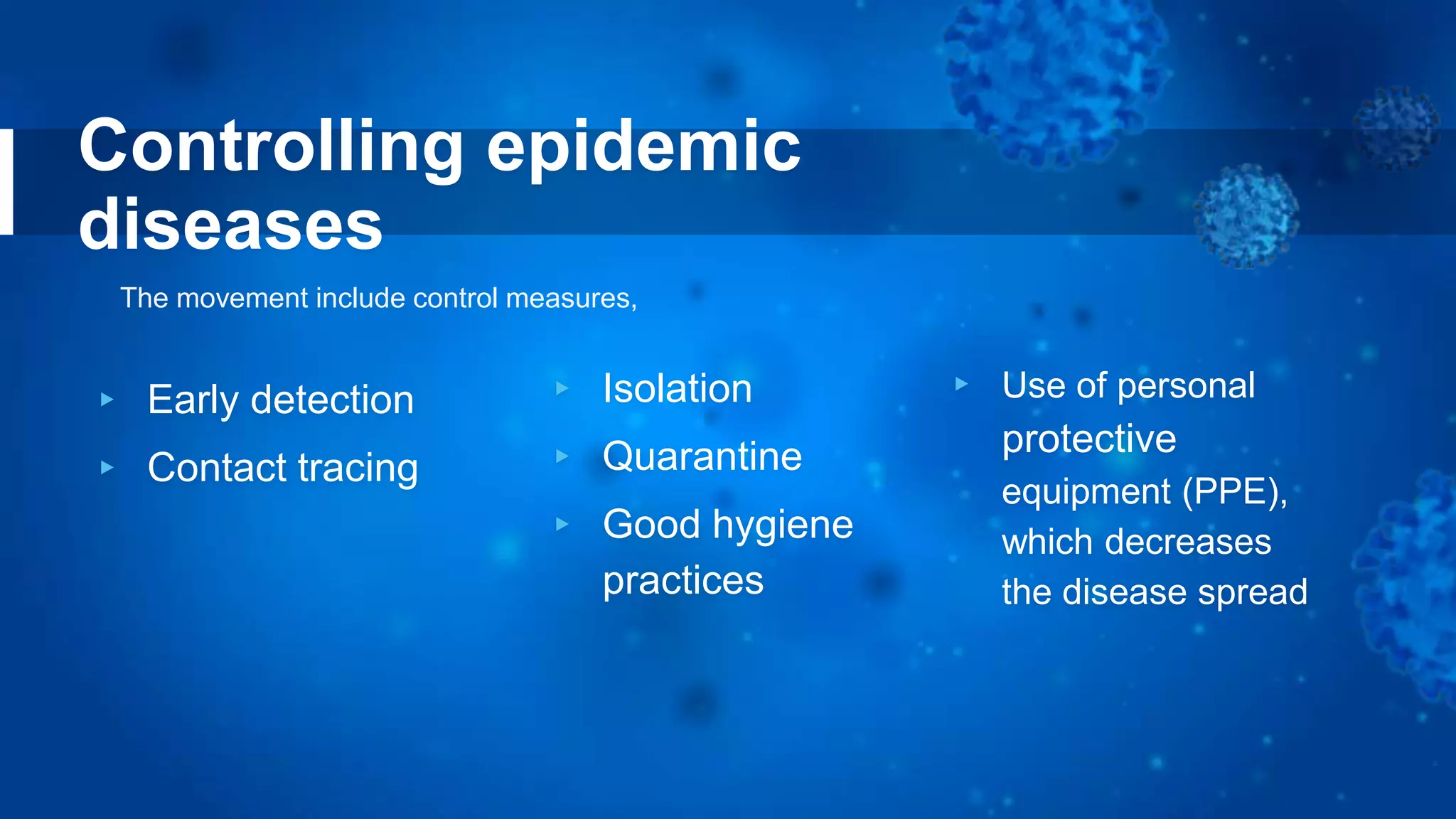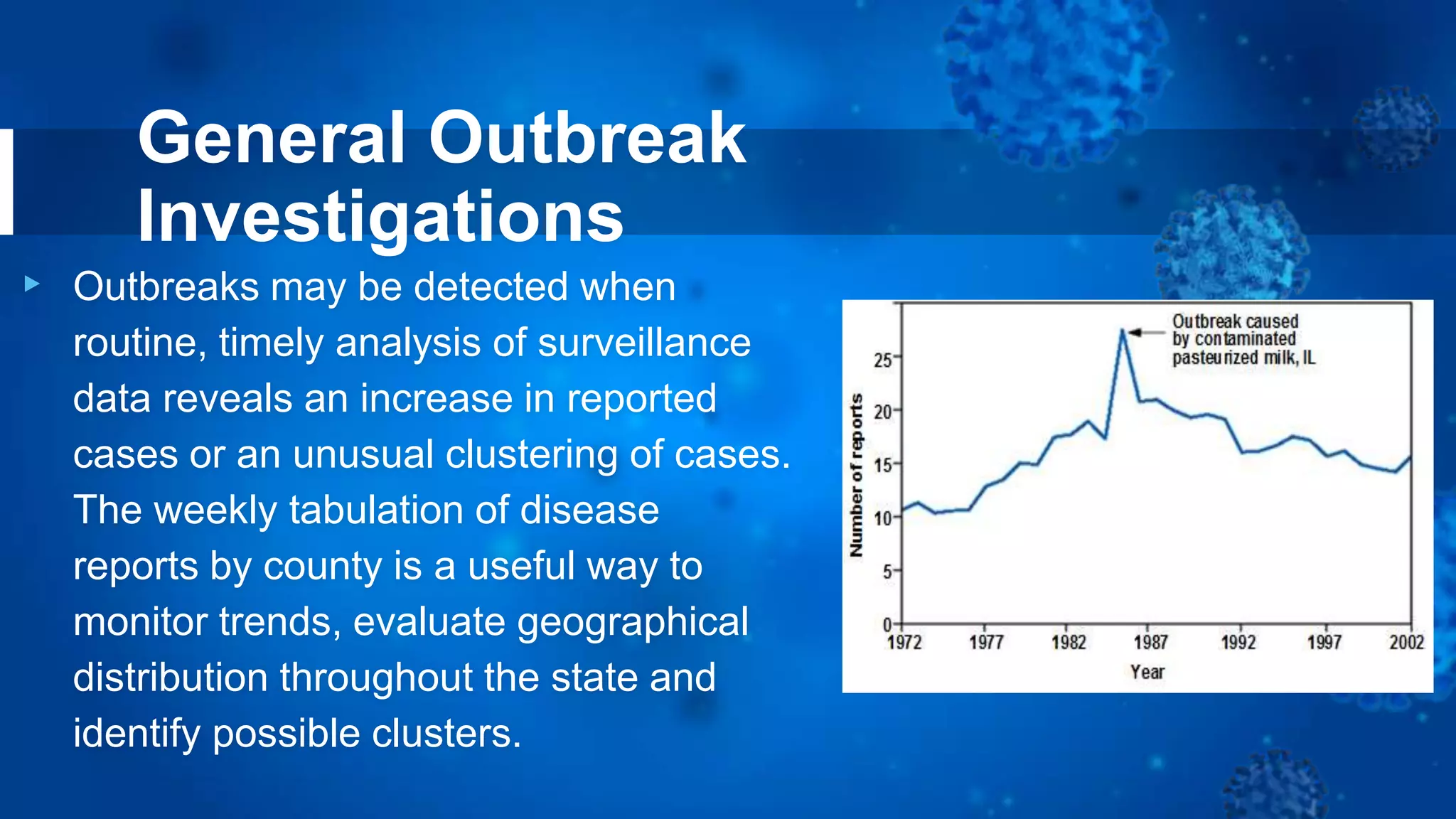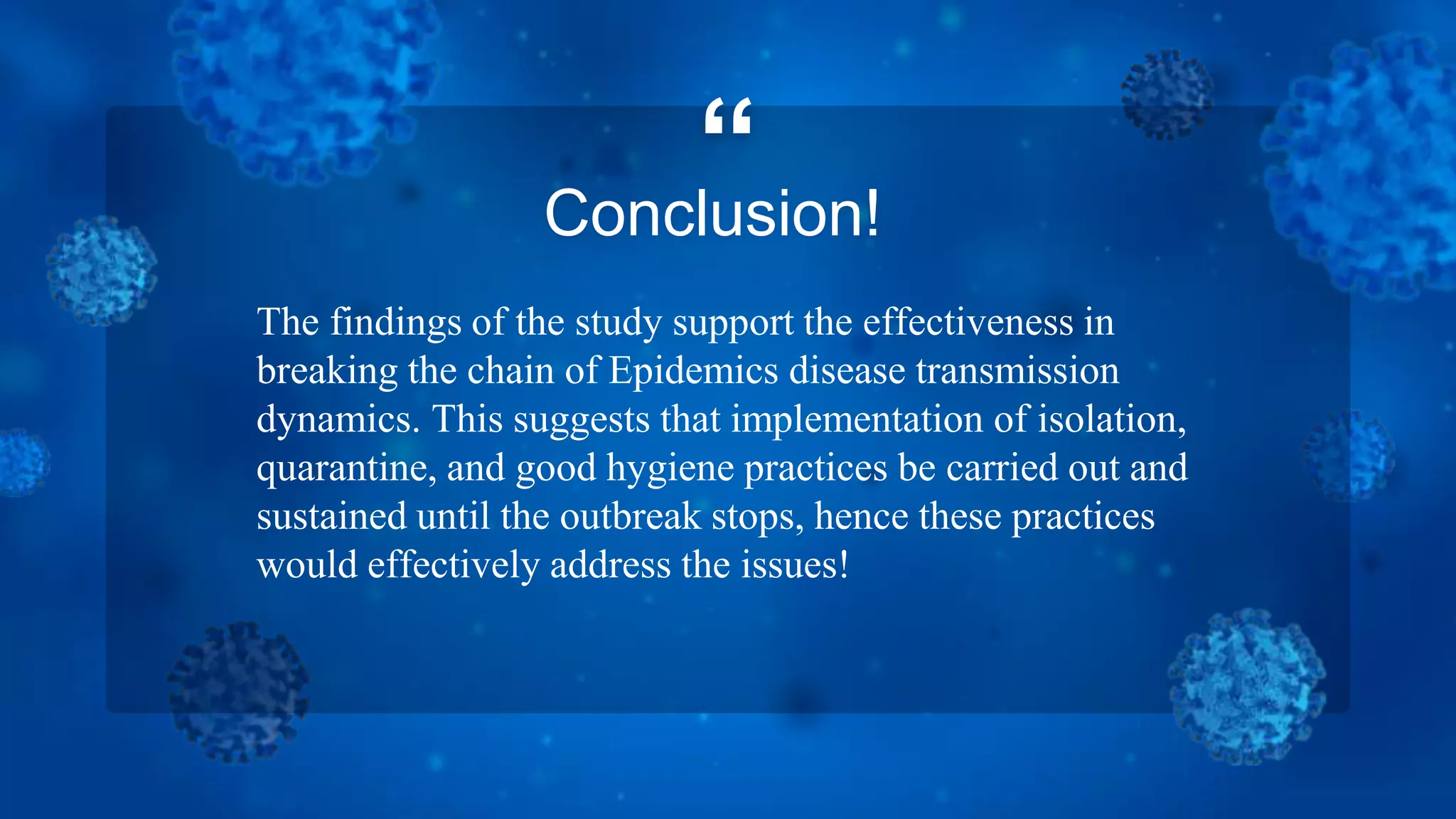This document provides an overview of epidemiology and its role in disease prevention and control. It defines key epidemiological terms and explains that epidemiology is the study of disease distribution, determinants, and application to control health problems in populations. Major historical epidemics are summarized, and principles of epidemiology like distribution, determinants, specified populations, and application are described. Methods of disease prevention and control like source removal, transmission prevention, and general outbreak investigation principles are also outlined. Lessons learned from the COVID-19 pandemic around vaccination, sanitation, healthcare workforce, hospital capacity, hygiene, and awareness are highlighted.
